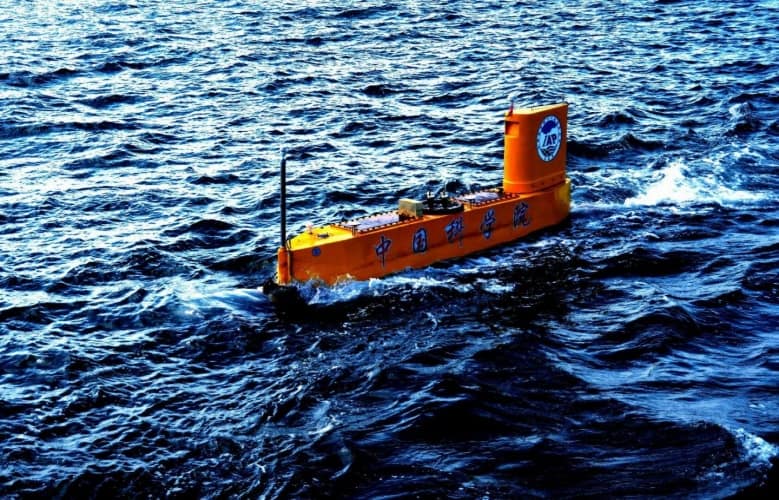
The weather rocket - known as a rocketsonde - is designed to perform weather observations beyond the range of balloons. It was launched from an unmanned semi-submersible vehicle (USSV) built by the Institute of Atmospheric Physics at Chinese Academy of Sciences. The Chinese team believes a network of USSVs equipped with rocketsondes could be used to enhance weather science and improve forecasting. The results of the vessel’s sea trials over the past two years have been published in the journal Advances in Atmospheric Sciences.
"Launched from a long-duration unmanned semi-submersible vehicle, with strong mobility and large coverage of the sea area, rocketsonde can be used under severe sea conditions and will be more economical and applicable in the future," said lead author Hongbin Chen, a professor of atmospheric and marine science at the Institute of Atmospheric Physics, Chinese Academy of Sciences.
Current techniques for atmospheric sounding at sea include dropping radiosonde from aircraft which travel down through the atmosphere collecting data, as well as drfitsonde balloons that carry telemetry equipment laterally through the stratosphere for several days or weeks. There are also sounding stations dotted around the oceans, but compared to the coverage over land, these are extremely limited. By developing unmanned oceangoing vessels that can launch weather rockets on command, the team believes previously unmonitored sections of ocean can now be studied more regularly.
"The unmanned semi-submersible vehicle is an ideal platform for marine meteorological environmental monitoring, and the atmospheric profile information provided by rocketsonde launched from this platform can improve the accuracy of numerical weather forecasts at sea and in coastal zones," explained study co-author Dr Jun Li, a researcher at the Institute of Atmospheric Physics, CAS.
According to lead author Chen, the researchers are now working on the next iteration of USSV which will have an enhanced technology suite.
"We are currently developing a new generation of USSVs which can carry various sensors relevant to marine science, including conductivity-temperature-depth, acoustic Doppler current profiler, and motion sensors to provide vertical profiles of the conductivity, water temperature, current velocity, and wave height and direction," he said.
"With that, a new interconnected USSV meteorological and oceanographic (METOC) observation network system will be developed to improve the efficiency of collecting METOC observations and provide comprehensive data at the temporal and spatial scales required to answer relevant scientific questions."




April 1886: the Brunkebergs tunnel
First ever example of a ground source heat pump?